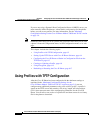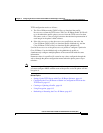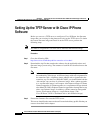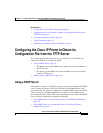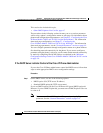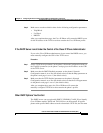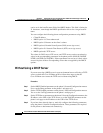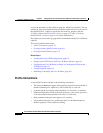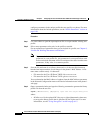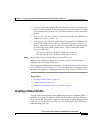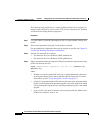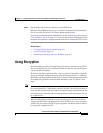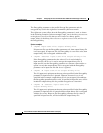
Chapter 6 Configuring the Cisco IP Phone Models 7905G and 7912G Using a TFTP Server
Creating or Updating a Profile
6-10
Cisco IP Phone Models 7905G and 7912G Administrator Guide (SIP)
OL-4277-01
you use the parameter tag file called sip_ptag.dat, which Cisco provides. You can
rename sip_ptag.dat to ptag.dat before you run the cfgfmt.exe tool, or you can use
the cfgfmt.exe tool -t option to specify the file name sip_ptag.dat. (See the
“Creating a Phone-Specific Profile” section on page 6-11 or the “Creating a
Default Profile” section on page 6-13 for more information.)
The cfgfmt.exe tool and the sip_ptag.dat file are bundled with the Cisco IP Phone
software.
This section includes these topics:
• Profile Conventions, page 6-10
• Creating a Phone-Specific Profile, page 6-11
• Creating a Default Profile, page 6-13
Related Topics
• Using Profiles with TFTP Configuration, page 6-2
• Setting Up the TFTP Server with Cisco IP Phone Software, page 6-4
• Configuring the Cisco IP Phone to Obtain its Configuration File from the
TFTP Server, page 6-5
• Using Encryption, page 6-15
• Refreshing or Resetting the Cisco IP Phone, page 6-17
Profile Conventions
A text profile file must conform to the following conventions:
• The characters #txt must appear at the beginning of the first line of the file so
that the formatting tool, cfgfmt.exe, will treat the file as a text file.
• A pound sign (#) must appear at the beginning of a line that is a comment.
• Parameter/value pairs must be in the form parameter:value, where parameter
is the exact name of the parameter and value is a valid value.
• Each parameter/value pair must appear on its own line.
• All parameter/value pairs are optional, but the Cisco IP Phone might not
function properly if some values are missing.



